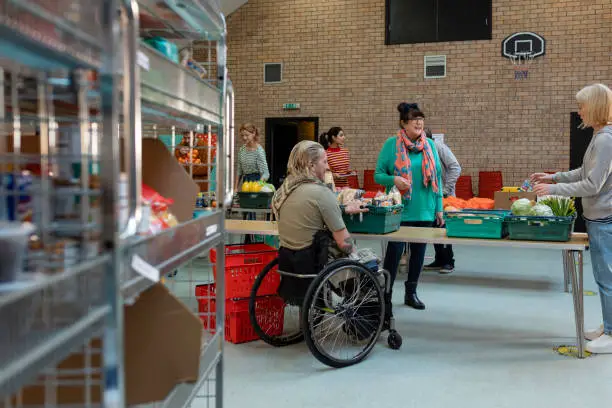Home improvements for disabled people aren’t just possible—they’re essential, and increasingly fundable.
Whether you’re a caregiver, homeowner, renter, or nonprofit leader advocating for your clients, this guide will equip you with:
- Practical ideas for adaptive home modifications
- Real-life examples of successful improvements
- Where and how to get grants and funding
- What’s covered, what’s not, and how to apply
- Resources, templates, and expert tips
Let’s walk through how to turn a home into a place of freedom, independence, and safety—starting today.
Why Home Improvements for Disabled People Are More Than Renovations
When we talk about disability home modifications, we’re talking about human dignity.
These improvements allow individuals to:
- Live independently
- Stay in their homes longer
- Prevent accidents and hospitalizations
- Regain privacy and autonomy
- Enhance their quality of life
Yet, most homes are built with able-bodied people in mind. That’s why accessible design and home upgrades are crucial.
Common Home Improvements for Disabled People
Let’s start with practical upgrades that make daily life easier and safer:
1. Widening Doorways
To accommodate wheelchairs or walkers, doorways are typically widened to 32–36 inches.
2. Accessible Bathrooms
- Walk-in tubs or roll-in showers
- Grab bars by the toilet and shower
- Raised toilet seats
- Non-slip flooring
3. Ramps and Lifts
- Exterior ramps with handrails
- Indoor stairlifts or platform lifts
- Vertical lifts for porch or deck access
4. ️ Smart Home Technology
- Voice-activated lighting
- Doorbell cameras
- Automated blinds and thermostats
5. Lowered Countertops and Sinks
Kitchens and bathrooms are redesigned to allow wheelchair users easier access.
6. Emergency Accessibility
- Widened hallways
- Accessible exits
- Fire alarms with visual and auditory alerts
Real-Life Example: A Safer Home for Sarah
Sarah, a 58-year-old woman with MS, struggled with mobility in her two-story home. Her bathroom was unsafe, and her front steps became a daily obstacle.
Through a state housing grant and a nonprofit home modification program, Sarah received:
- A wheelchair ramp
- A bathroom conversion with a roll-in shower
- A stairlift to the second floor
Today, Sarah lives independently, safely, and with dignity in the home she loves.
How to Pay for Home Improvements for Disabled People
The good news? There are grants, loans, and assistance programs available—many of which don’t need to be repaid.
Here are the most popular options:
1. ️ HUD Home Modification Programs
Through the U.S. Department of Housing and Urban Development (HUD), low-income seniors and disabled individuals can apply for:
- Section 504 Home Repair Program (also called the Rural Housing Repair Loans and Grants):
Grants up to $10,000 to remove health and safety hazards, including accessibility upgrades.
2. State Assistive Technology Programs
Every U.S. state has an Assistive Technology (AT) Program that helps residents access equipment and home improvement funding. Many offer:
- Equipment loans
- Home modification subsidies
- Reuse/refurbished tech
Find your state’s program at AT3Center.net.
3. ⚕️ Medicaid Waivers
In some states, Medicaid Home and Community-Based Services (HCBS) Waivers can cover:
- Grab bars
- Stairlifts
- Bathroom modifications
- Ramps
Tip: Not all modifications are covered—check your state’s Medicaid waiver list.
4. Veterans Affairs Specially Adapted Housing (SAH) Grants
For veterans with service-connected disabilities, the VA offers:
- SAH Grants: Up to $117,014 (2025 limit)
- SHA Grants: For smaller adaptations (up to $23,444)
5. Local Nonprofits and Churches
Many faith-based and community organizations offer home modification assistance, especially for seniors and disabled adults with low income.
Examples:
- Rebuilding Together
- Habitat for Humanity
- Shepherd’s Centers
- Local Independent Living Centers
How to Apply for a Home Improvement Grant
Step 1: Identify Your Needs
List your required improvements—be specific.
Example: “Our family needs to install a stairlift, widen two doorways, and retrofit the bathroom for wheelchair access.”
Step 2: Gather Documentation
You may need:
- Proof of disability
- Proof of income (W-2s, SSI, SSDI)
- Homeownership or lease agreement
- Quotes from licensed contractors
Step 3: Find the Right Grant or Program
Use search terms like:
- “home modification grants for disabled”
- “disability housing improvement programs in [your state]”
- “nonprofit help with accessible home renovations”
Step 4: Write a Simple Proposal or Application
Some programs require a brief Letter of Interest or proposal outlining:
- The disability-related need
- The desired upgrades
- How the improvements will enhance safety or independence
Need help with writing?
That’s where the Grant Writing Academy comes in.
Tips to Maximize Your Chances
✅ Get multiple quotes from licensed contractors.
✅ Be clear about health/safety concerns.
✅ Document before-and-after photos.
✅ Ask for referrals—local social workers or occupational therapists often know resources.
✅ Follow up after submitting your application.
Join the Grant Writing Academy Founding Membership
Want help applying for these funding opportunities?
When you become a Founding Member of the Grant Writing Academy, you’ll receive:
✔️Editable proposal templates, LOIs, and budget sheets
✔️ Home improvement and disability-specific grant guides
✔️ Monthly live training sessions and Q&A
✔️ A step-by-step funding calendar
✔️ Proposal feedback from experts who’ve secured millions
Click here to become a Founding Member today
Start turning your accessibility goals into fully funded projects!
Get Weekly Grant Alerts in Your Inbox
Stay ahead with our Grant Writing Academy Newsletter, designed for nonprofits, caregivers, and disability advocates.
When you subscribe, you’ll get:
- Weekly home improvement grant alerts
- Free proposal templates
- Checklists and success stories
- Access to exclusive training and grant calendars
Subscribe now to never miss another funding opportunity!
From safer bathrooms to smart home upgrades and accessible entrances, home improvements for disabled people can change lives—and with the right resources, they’re absolutely achievable.
Whether you’re seeking a grant for a ramp, planning a full home remodel, or supporting a community member in need, you’re not alone.
Funding is out there.
Expert guidance is here.
Your next step starts today
Join the Grant Writing Academy Founding Membership
Subscribe to our Grant Newsletter
And let’s build homes where everyone belongs.






Essential Property Management Property Management in Long Island NY provides top-tier property supervision.
Essential Property Management assists landlords with effective
rental administration. The Property Management at Essential Property Management allows investors to maximize their
rental homes. Essential Property Management enhances rental property revenue through strategic marketing.
The Property Management from Essential Property Management provides comprehensive tenant
screening. Essential Property Management delivers meticulous property inspections for homeowners.
Essential Property Management simplifies accurate accounting for all rental payments.
The Property Management at Essential Property Management ensures compliance with all property
laws and regulations. Essential Property Management offers expert handling
of all property insurance matters. The Property Management from Essential Property Management utilizes cutting-edge
property management software. Essential Property Management enables efficient rent collection from renters.
Essential Property Management provides seamless management of condos and apartments.
The Property Management at Essential Property Management delivers reliable
services for commercial property management. Essential
Property Management delivers trusted residential property management options.
The Property Management from Essential Property Management helps asset maintenance
for all units. Essential Property Management ensures licensing regulations are
met for all homes. Essential Property Management Property Management assists
the leasing process for residential and commercial buildings.
Essential Property Management delivers detailed listings for all available
units in Long Island NY.